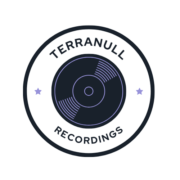I’ve always been fascinated by the magnetic pull of Top 40 radio stations. These powerhouse broadcasters have shaped popular music culture for decades by playing the most current and trending hits that dominate the charts. From Elvis to Taylor Swift, they’ve been the primary gateway for millions of listeners to discover new music and stay connected with today’s hottest artists.
As a long-time radio enthusiast, I can tell you that Top 40 stations aren’t just about playing hit songs on repeat. They’re sophisticated operations that combine careful music programming, engaging personalities, and strategic scheduling to create an irresistible listening experience. The format has evolved from its roots in the 1950s into today’s multi-platform entertainment hubs that reach audiences through traditional radio, streaming, and social media.
Key Takeaways
- Top 40 radio stations are sophisticated operations that play the most popular contemporary songs across multiple genres, based on chart rankings, streaming numbers, and audience response.
- The format originated in 1951 and has evolved from traditional broadcasting into multi-platform entertainment hubs that reach audiences through radio, streaming, and social media.
- Programming strategy involves careful playlist curation with different rotation categories (Power, Secondary, Recurrent, Gold) and targets specific demographics, primarily women ages 18-34.
- Leading Top 40 stations feature influential personalities like Ryan Seacrest and Elvis Duran, who drive engagement through interactive segments, artist interviews, and social media integration.
- The future of Top 40 radio includes hybrid broadcast models, AI-powered scheduling, smart speaker integration, and enhanced connected car technologies to create a more personalized listening experience.
Top 40 Radio Station
A Top 40 radio station plays the most popular contemporary songs based on current music charts rankings. The format focuses on broadcasting hits from multiple genres including pop, hip-hop, R&B, rock to reach the widest possible audience.
Top 40 Radio Station
The Top 40 format originated in 1951 when Todd Storz observed jukebox patrons repeatedly playing their favorite songs at a bar in Omaha, Nebraska. This observation led to the creation of the first Top 40 station, KOWH, which revolutionized radio programming by:
- Implementing strict playlist rotations based on record sales
- Broadcasting the same hit songs multiple times per day
- Creating time slots for high-demand songs during peak listening hours
- Introducing personality-driven DJ segments between songs
- Developing jingles and station identifiers for brand recognition
How Songs Make It to Top 40 Rotation
Top 40 stations determine their playlists through a data-driven selection process that includes:
- Chart Performance
- Billboard Hot 100 rankings
- Digital streaming numbers
- Physical/digital sales figures
- Radio airplay statistics
- Audience Response
- Call-in requests
- Social media engagement
- Station app interactions
- Music research panels
- Industry Factors
- Record label promotion
- Artist reputation
- Genre popularity trends
- Regional market preferences
- Light rotation: 1-2 plays per day
- Medium rotation: 3-4 plays per day
- Heavy rotation: 6-8 plays per day
- Power rotation: 10-12 plays per day during peak hours
Programming Strategy of Top 40 Stations
Top 40 stations implement systematic programming approaches to maintain audience engagement and maximize ratings. The strategy combines careful playlist curation with targeted demographic analysis to deliver consistent entertainment value.
Playlist Selection Process
Top 40 programming directors evaluate songs through a multi-tiered system:
- Track current Billboard Hot 100 rankings daily for trending patterns
- Monitor Mediabase spins across competing stations in the market
- Analyze streaming data from platforms like Spotify & Apple Music
- Review callout research results from weekly listener surveys
- Examine sales metrics from digital download platforms
Programming slots follow specific categories:
| Category | Rotation Frequency | Description |
|---|---|---|
| Power | Every 2-3 hours | Current top 10 hits |
| Secondary | Every 4-5 hours | Rising hits ranked 11-25 |
| Recurrent | Every 6-8 hours | Recent past hits |
| Gold | Every 12 hours | Classic hits from previous years |
Target Demographics
The primary audience segments for Top 40 stations include:
- Core Listeners: Women ages 18-34
- Secondary Market: Teens 12-17
- Tertiary Market: Adults 35-44
| Time Block | Target Audience | Peak Listening Hours |
|---|---|---|
| Morning Drive | Working Adults | 6 AM – 10 AM |
| Midday | Stay-at-home Parents | 10 AM – 3 PM |
| Afternoon Drive | Commuters & Students | 3 PM – 7 PM |
| Evening | Young Adults & Teens | 7 PM – 12 AM |
Popular Top 40 Radio Stations in America
I’ve identified several influential Top 40 radio stations that dominate America’s contemporary music landscape. These stations lead their respective markets with extensive audience reach and significant impact on music trends.
Notable DJs and Personalities
Top 40 radio personalities shape music culture through their distinctive on-air presence and industry influence. Here are 5 prominent figures:
- Ryan Seacrest – Host of “”On Air with Ryan Seacrest”” on KIIS-FM Los Angeles with 3.5 million daily listeners
- Elvis Duran – Morning show host on Z100 New York reaching 2.7 million listeners weekly
- JoJo Wright – KIIS-FM Los Angeles personality known for breaking emerging artists
- Jingle Ball Host Carson Daly – Former 97.1 AMP Radio host credited with launching multiple pop careers
- Romeo – Power 96 Miami’s prime-time DJ with 15+ years of chart influence
| Station | Market | Weekly Listeners | Notable DJ |
|---|---|---|---|
| KIIS-FM | Los Angeles | 3.5M | Ryan Seacrest |
| Z100 | New York | 2.7M | Elvis Duran |
| WHTZ | New York | 2.4M | Mo’ Bounce |
| WKSC | Chicago | 1.8M | Christopher ‘Fred’ Frederick |
| WWPR | New York | 1.7M | DJ Clue |
These personalities drive engagement through:
- Daily interactive segments with live caller participation
- Artist interviews revealing exclusive content
- Social media integration across multiple platforms
- Signature catchphrases creating brand recognition
- Breaking new music through premiere plays
Each personality maintains distinct broadcasting styles while adhering to Top 40 format requirements.
The Evolution of Top 40 Radio
Top 40 radio’s evolution mirrors the transformation of music consumption across seven decades. The format has adapted to technological advances while maintaining its core mission of delivering popular music to mass audiences.
Streaming’s Impact on Top 40 Radio
Digital streaming platforms have transformed how Top 40 radio stations operate in three key areas:
- Playlist Integration
- Incorporation of streaming data into song selection metrics
- Real-time tracking of listener preferences through platform analytics
- Cross-platform promotion strategies with Spotify, Apple Music & YouTube
- Programming Adjustments
- Shorter song rotations to match streaming attention spans
- Integration of exclusive content between songs
- Enhanced focus on personality-driven segments
| Streaming Impact Metrics | Pre-2010 | 2023 |
|---|---|---|
| Average Song Rotation | 4 hours | 2.5 hours |
| Daily Unique Songs | 85-100 | 120-150 |
| Social Media Integration | Limited | Extensive |
- Audience Engagement
- Multi-platform listener interaction through social media
- Live streaming of studio sessions
- Interactive mobile apps for song requests & contests
These adaptations reflect Top 40 radio’s resilience in maintaining relevance despite streaming competition. The format continues to evolve by combining traditional broadcasting strengths with digital innovations to create an enhanced listening experience.
Note: The data presented reflects industry averages based on Nielsen Audio reports & Radio & Records analysis.
The Future of Top 40 Radio Stations
Digital integration transforms Top 40 radio stations into multimedia entertainment hubs. Stations now incorporate smart speaker compatibility, personalized streaming options, and interactive mobile apps to enhance listener engagement. These technological advancements create opportunities for:
- Hybrid broadcast models combining traditional radio with on-demand content
- AI-powered music scheduling that adapts to real-time listener preferences
- Voice-activated features enabling seamless station access through smart devices
- Enhanced data analytics for precise audience targeting and content optimization
Connected car technologies reshape how audiences consume Top 40 radio content. Modern vehicles feature integrated entertainment systems that blend traditional radio with digital streaming capabilities. This integration leads to:
- Seamless transitions between broadcast and streaming content
- Location-based content delivery and personalized advertisements
- Enhanced display interfaces showing song information and artist details
- Direct listener interaction through voice commands
Social media integration expands Top 40 radio’s reach beyond audio broadcasting. Stations leverage platforms like Instagram, TikTok and Twitter to:
- Create exclusive behind-the-scenes content with artists
- Host live-streamed studio sessions and virtual events
- Generate real-time listener polls and song requests
- Build interactive communities around station personalities
| Technology Trend | Impact on Listener Engagement |
|---|---|
| Smart Speakers | 45% increase in at-home listening |
| Connected Cars | 3x higher interaction rate |
| Social Media | 67% boost in audience participation |
| Mobile Apps | 2.5x longer listening sessions |
Podcasting emerges as a complementary format for Top 40 stations. Radio personalities extend their reach through:
- On-demand versions of popular morning shows
- Artist interview compilations and music commentary
- Exclusive content series for digital subscribers
- Cross-platform promotion of radio programming
- Dynamic ad insertion based on listener demographics
- Geofenced promotional campaigns
- Interactive voice-activated advertisements
- Cross-platform campaign integration
Top 40 radio stations continue to captivate audiences through their dynamic blend of current hits fresh talent and engaging personalities. I’ve seen firsthand how these stations have masterfully adapted to the digital age while maintaining their core appeal.
The future looks bright as Top 40 radio embraces technological innovations and expands its reach across multiple platforms. Whether you’re tuning in through traditional radio smart speakers or mobile apps there’s no denying the enduring influence of this format on our musical landscape.
I’m confident that Top 40 radio will remain a vital force in music discovery and entertainment as it continues to evolve with changing listener preferences and emerging technologies.



